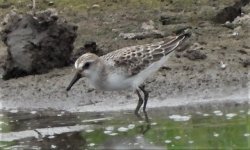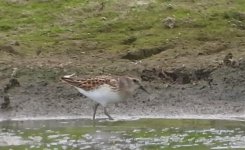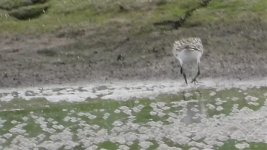This is my first entry, so please excuse any errors. On July 31,2020 , I observed in Chase, British Columbia, Canada what I now believe are two potential Little Stints. One, I would classify as non-breeding and the other is confusing but has the double supercillium and train tracks on the mantle specific to a Little Stint Juvenile. I photo compared the juvenile to our familiar Least, Western and Semipalmated Sandpipers and Sanderlings but was not satisfied with them. Photo compared to Red-necked Stint which I am not familiar with and concluded Little Stint. The early date of June probably confuses the molt and makes it a more difficult id? The nonbreeding individual does not actually fit to me anything but Little Stint. I found the Little Stint blog on this site from 2007 which helped a lot and perhaps some of those oldtimers are still around to help with these two birds. Will attempt to attach one picture of each of them but have many more. Appreciate any discussion, as Stints would be rare for North America.
Attachments
Last edited:










